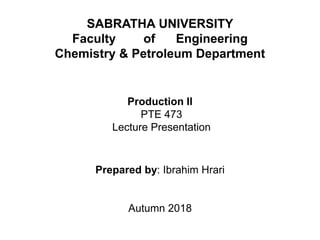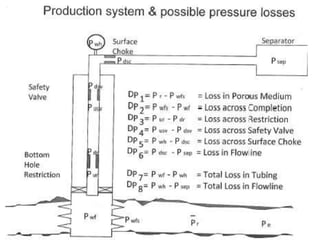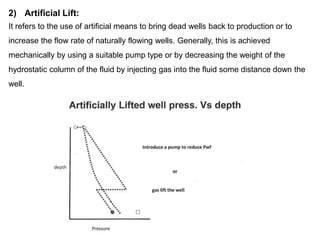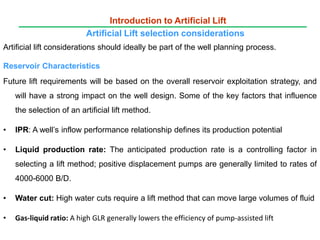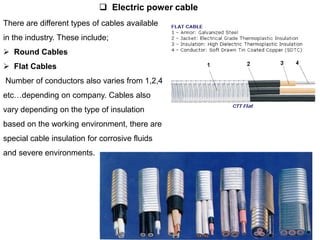The document provides an overview of artificial lift methods in oil production, detailing the three recovery phases: primary, secondary, and tertiary. It discusses various artificial lift techniques, including gas lift, downhole pumps, and electric submersible pumps, highlighting their advantages and disadvantages, as well as key considerations for selecting a method based on reservoir and well characteristics. Additionally, it emphasizes the importance of planning for artificial lift in relation to overall reservoir exploitation strategies.
